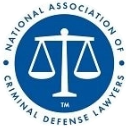The facades of many forensic sciences have been cracking lately, showing what’s underneath their pretty exterior: junk science, baseless assumptions, and essentially a bunch of hokum. Previously vaunted forensic “sciences” have been crumbling to pieces left and right. Now it’s bite mark analysis’ turn.
The Dallas Morning News has a piece up about how the Innocence Project is arguing that the bite mark analysis evidence that sent Steven Chancey to prison for the murders of John and Sally Sweek was and is absolutely bogus. At trial, Dr. Jim Hales, then the chief dental consultant for the Dallas County Medical Examiner’s Office, testified that after analyzing what appeared to be bite marks on one of the victim’s arms, there was a “1 in a million” chance that someone other than Steven Chancey did it. Chancey was convicted and sentenced to life in prison.
Before I move on, I have a bone to pick with the DMN’s story. It’s as if it was designed to discredit the claim that bite mark analysis is junk science. First off, there’s the headline for the story. “Group Says Bites are Bogus Evidence; it wants convictions reviewed.” Besides the clumsiness of it… “Group Says…” Just some group? Not the nationally renowned Innocence Project? You know, the one that’s proven or helped prove HUNDREDS of people were wrongfully convicted and incarcerated (not to mention dozens here in Dallas county)? We don’t hear that the “group” is the innocence project until the fourth paragraph of the story, until – not incidentally – after the writer has recounted the facts of the crime in grisly detail. I’m used to seeing this in bad Texas Court of Criminal Appeals opinions. If the writer wants you to ignore the law or the fairness of a situation, they start with a sensational recounting of the grisly facts of the case (here we read that the victims were “lying in a swirl of blood…riddled with stab wounds…their throats had been slashed.”). Why? Because after you read how some person was brutally killed/raped/etc – in graphic detail with sensational terms – and then you read how a jury of his/her peers convicted the defendant… it’s hard to overcome that first impression. It colors the rest of what you read. You subconsciously brand the defendant a sociopath or an animal; later, when you’re faced with the possibility that he may be innocent or maybe didn’t get a fair trial, you’re much more inclined to dismiss it or accept it but believe that the bastard got what was coming to him…
In journalism circles, this is called burying the lead. The lead in this story should be that a mounting tide of actual scientific opinion says that bite mark analysis is junk science (not just this one “group,” whoever they are). You the reader doesn’t begin to read about the mountain of other experts who say bite mark analysis is hokum until the 7th paragraph when we hear that vague “critics” of bite mark analysis say… Then the story does a good job of going through and citing the ongoing list of experts and studies that call bite mark analysis what it is.
So how about fixing problems like this? The headline could read “Bogus Forensics? How Junk Science May Have Lead to Lost Decades” or something like that. And the story could get right to the lead – that the Innocence Project is working on overturning yet another case based on a pseudo-science that is increasingly discredited across the country, even by some of it’s formerly biggest champions.
Anywho… and now back to our regularly-scheduled programming…
As a good counterpoint to the DMN story, the Intercept has a wonderful story about Bill Richards, serving 25 to life in California prison for supposedly murdering his wife Pamela.
Specifically, it was an increasingly discredited forensic discipline — bite mark analysis — that condemned him to a life behind bars. The critical piece of evidence: a bruise found on the top of Pamela’s right hand, which, according to the trial testimony of two prominent dentists, was caused by a human bite, whose injury pattern was consistent with her husband’s lower teeth.
15 years after Richards went to prison, the state’s star witness against him, Dr. Norman “Skip” Sperger, testified that he was wrong about analysis that led to Richards’ imprisonment and he could no longer support his findings. And the growing chorus of doubt about this “science:”
Some of the harshest criticism comes from within the field itself — from forensic odontologists who now say the bite mark evidence dentists for years have peddled in courtrooms is pure junk. Tests conducted by members of the nearly 40-year-old American Board of Forensic Odontology — the discipline’s certifying body — have repeatedly undermined the expertise claimed by its own members. In July, Jo Handelsman, the associate director for science in the White House Office of Science and Technology Policy, referenced one such study, telling attendees of the International Symposium on Forensic Science Error Management that bite mark analysis “is not based on science” and should be “eradicated.”
And:
To date, 24 people arrested or convicted on bite mark evidence have been exonerated by DNA, according to the Innocence Project. It is a figure Sperber described to The Intercept as “very disturbing” — if not terribly surprising. Sperber said that over his career he’s seen lots of mistakes made in bite mark analysis — by colleagues who aren’t well-trained, aren’t diligent or who just don’t care. He said he’s tried to work within the odontology community to clean up their act, with little success.
The story closes with this:
Richards has now been incarcerated for 22 years. Nearly all of his family and loved ones have died. He has suffered for more than a decade with poorly treated cancer.
Tall, with a head of silvered hair combed neatly back from his slender face, Richards sat in a courtyard at the California Medical Facility in June, touching a wedding ring that he still wears. He loved Pamela, he says, and he did not kill her — and he believes the district court judge who heard Sperber’s recantation understood that. It’s been seven years since “the judge ruled me innocent,” Richards says. “I’m still sitting here.”
View All BlogsYeah, that’s more like it…





